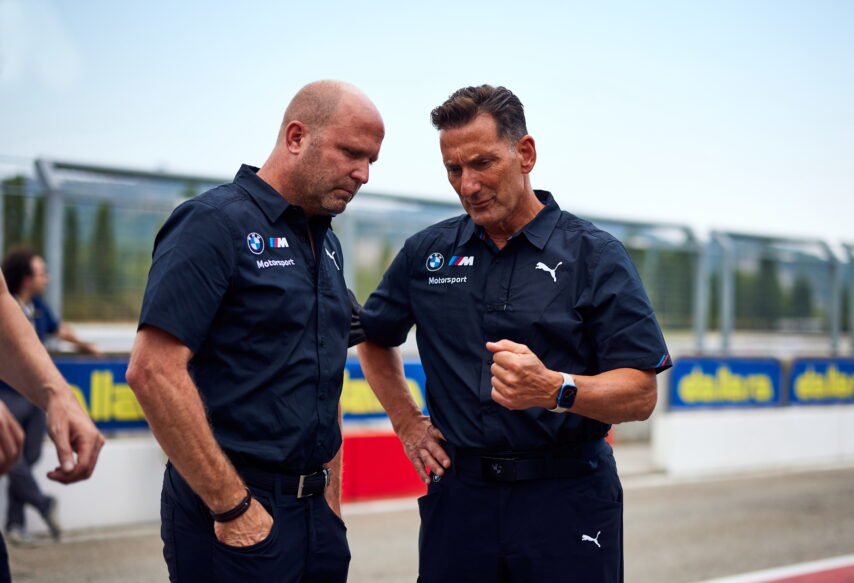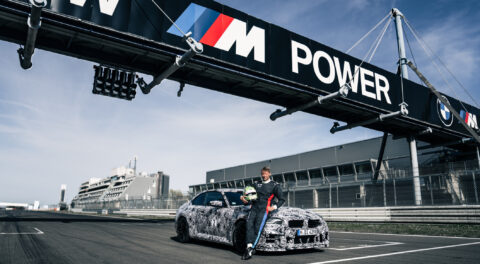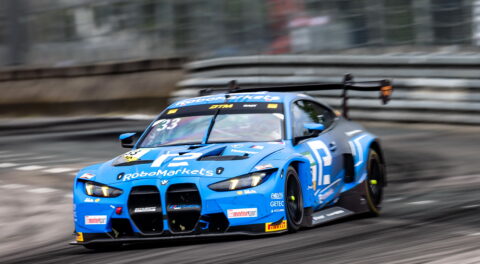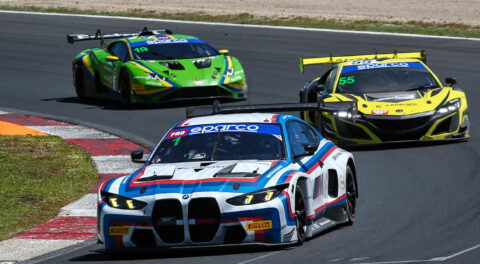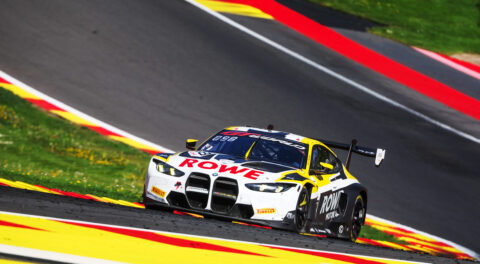We caught up with BMW M Hybrid V8 Project Leader Maurizio Leschiutta to talk about the Rolex 24 at Daytona race, the upcoming 12 Hours of Sebring, and ongoing development work on the BMW GTP prototypes.
BimmerLife: How did the Rolex 24 at Daytona go from your perspective?
Maurizio Leschiutta: We had eight of nine GTP cars cross the line, which was a remarkable achievement for everyone. The fact that Porsche suffered a DNF with their experience and the mileage they had on the cars proves that even Goliath can be beaten, and it shows us that you can never leave anything to chance. Coming from behind the scenes in our program, which went from zero to the first 24-hour race in eighteen months, I was extremely happy that we got both cars across the line. I was also happy that one of our cars (#25) was reasonably on the pace, but unfortunately that was the car that suffered the biggest issue in the race. It was good to know the potential of the car is there. It was also the first time we had gotten a 24-hour distance under our belt, which we had not managed to do in testing, and this to me was a remarkable achievement.
BL: Can you give more detail on the issues that the cars had during the race?
ML: The #25 had what we call a red-light condition, which is when you see the lights in the windscreen go from green to red, which means the car has a high-voltage issue. In our case, the high-volt system was not completely isolated from the rest of the car. Once we had determined that the car was safe, after we had disconnected the battery in the high-voltage safety area, we took it to the garage. We weren’t able to pinpoint the problem because we didn’t have the luxury of time, we decided to change everything in the hybrid system. That took time and sent us 109 laps down on the leader. We’re now working with Bosch and Williams to understand where the root cause is with the failure so we can take corrective actions for Sebring, and we share this information with the other manufacturers. The #24 car had an issue on the electronic braking system. We’re still investigating what that was caused by.
BL: What were the top three things you learned about the GTP cars from running for 24 Hours at Daytona?
ML: Number one was that we could complete 24 hours. It was the first time we had accomplished that mileage, because we had not successfully completed 24 hours of running previously in testing. The second thing is that the car potential is there. The #25 car lap times compared to Porsche and Cadillac was on the pace. It was the first time really that you could compare the car to the others, because you never really know in testing. In the race, the teams showed most of their potential and we could see that the #25 car had the characteristics to be competitive with Cadillac and Porsche. The Acura is another story. It’s quite a fast car, so we have a bit of head scratching to do to get up to their performance level, which we will do. The third thing that we learned is that we could all pull together to make the result happen. This was the first time that BMW and the Rahal team are in GTP and the first time we’re all working together in this new category. There’s a lot of new people in the program and it involves a lot more people than the GT program did. Making all the chemistry between all the people work was another achievement.
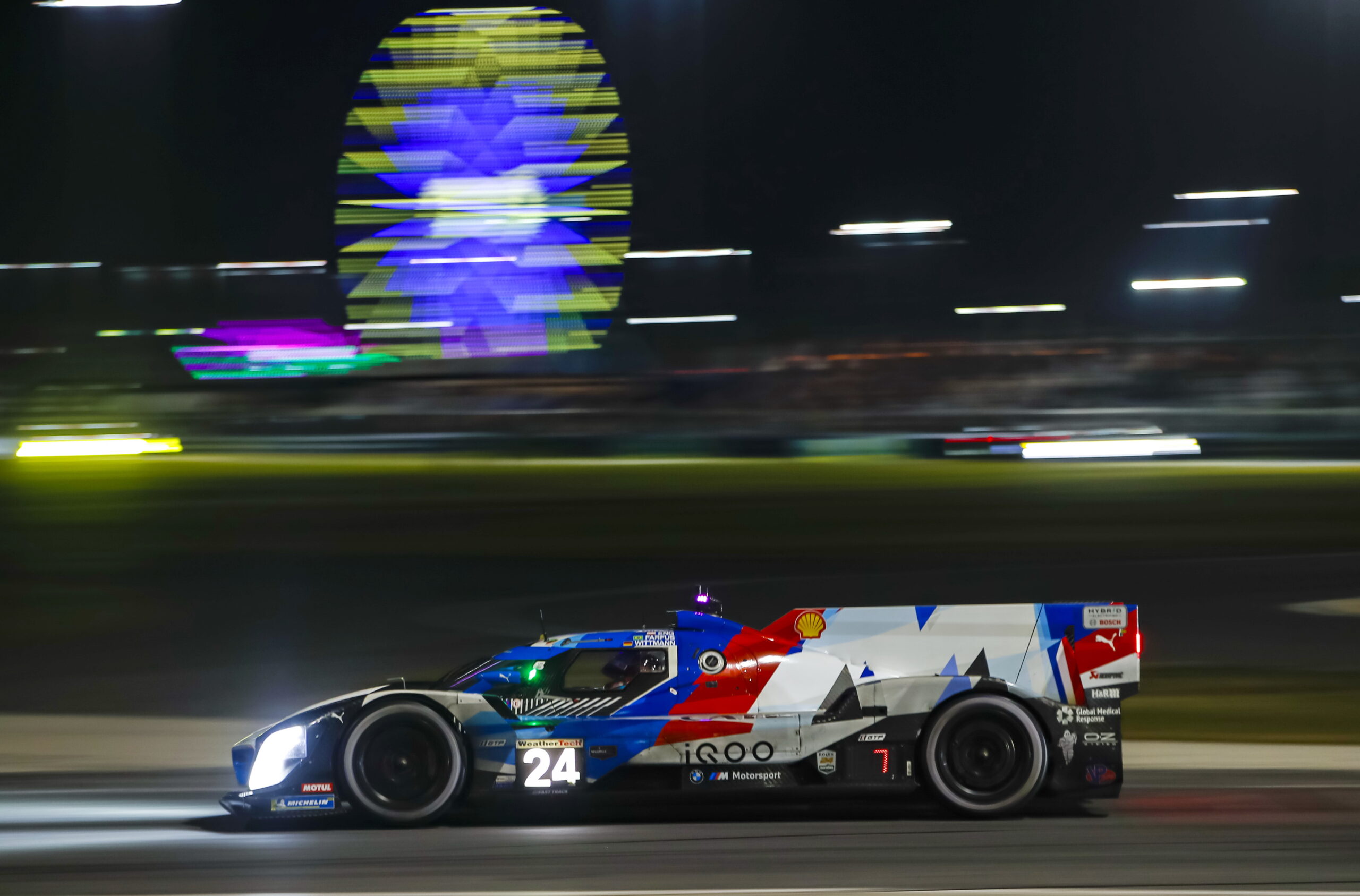
BL: What are the things you need to do with the cars before the 12 Hours of Sebring, which is coming up quickly in mid-March?
ML: Our focus will be on finding performance for the Sebring race. Daytona is such a particular track compared to the rest of the calendar because it’s a super-speedway and has banking. The characteristics of the other tracks we’ll race on will be significantly different than Daytona, so we’ll see how we’ll be. I think we’ll find ourselves in a better place and will see how we measure up to the competition.
BL: What’s the process for getting prepared for going to tracks this year that you have never tested at before?
ML: As a general rule, we prepare in a virtual environment. Through our simulations we calculate what we think will be the best setup for the car, then we put this in our virtual real world, which is a simulator with the driver in the loop. He drives and we go through run programs in this virtual world, where we do testing checks and also emergency procedures and emergency backup plans. We go through all of this on the simulator and then bring this to the track in small packages which we think will work, because on a race weekend you don’t have much time to experiment. As always, the preparation is done at home and the execution is done at the track where you try to minimize errors.
BL: Do you think Acura and Cadillac in particular have an advantage over BMW because they’ve been racing the DPi prototypes in previous IMSA seasons? Is the setup on those cars similar enough to the GTP cars that they go in with an advantage on getting to the right setup more quickly?
ML: Yes, this is an advantage that they have. We’re newcomers to prototype racing, so we have a lot to learn. Our team is also new. Rahal raced with us before in GT, but not in prototypes. I think we’re on the steep part of the learning curve there. It’s not rocket science, but there are best practices and things that you learn. The current LMDh (GTP) cars are not that far away from DPi. They have more power and have the hybrid system obviously, but there are a lot of similarities, so I think they do have an advantage. We just have to roll up our sleeves and catch up.
BL: Are you still dealing with supply chain issues on these cars going into Sebring?
ML: The supply chain challenge has been going on since day one for everyone, including the hybrid partners and the constructor partners. I don’t think that will change. Until this system becomes stable toward the end of this year, the supply chain will continue to be a challenge.
BL: Is BMW M Team WRT (who will be racing the M Hybrid V8 in the FIA WEC championship in 2024) involved at all with the program in IMSA to learn more about the cars for when they race it next year?
ML: They were involved in our test program and some of their folks helped us at Daytona. They will continue to support us for Sebring, because the volume of work is so high. Once we get to April, they’ll be busy building their own test car, and in May and June they’ll be busy with European testing.
BL: The 12 Hours of Sebring weekend will also host the first round of the FIA WEC season, with their LMh prototypes. I assume this will be especially interesting to see how the cars compare, since they will be racing together in WEC this season and BMW will be in WEC next year. (The LMDh/GTP prototypes racing in IMSA and the LMh cars that are currently competing in WEC are allowed to compete against each other in the same prototype classes).
ML: It will be interesting for us to see how this is going to pan out. It will be the first time that our category (LMDh), will have entries in the WEC race at Sebring with Porsche and Cadillac, and the first opportunity to see how they match up to the LMh cars, and in particular to the new Ferrari. It’s the first time that these two different spec cars will be competing on the same venue at the same time, so we’ll be watching them very closely. It will give us more insight into how 2024 might be. —David Haueter
[Photos by BMW and LAT Images]

